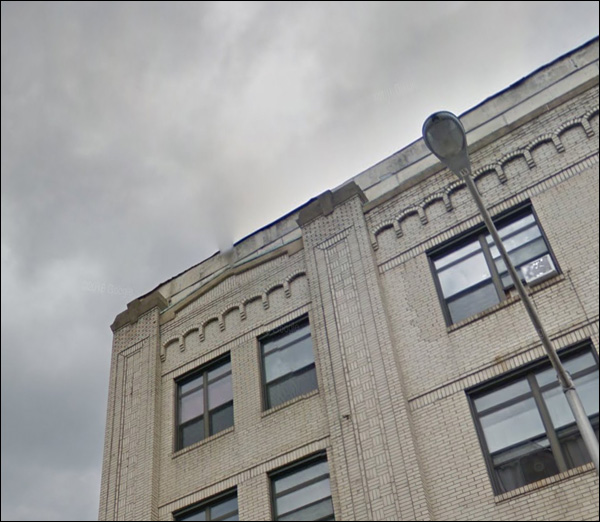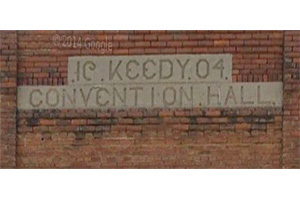
 |
 |
||||||||||||||||||||||||||||||||||||||||
Coal, eh. The population was 55,355 m 1940. It’s under 20K now. There was also a company called National Tube Works; they employed 10,000 men, once. It’s still called the Tube City. US Steel bought them a long, long time ago, and while the line still exists, I gather that they make Tubes elsewhere. The result of these dislocations - well, it’ll take two weeks to work through this. The sort of view that once would be bustling on six out of seven days. Masonic Temple in the background.
Now you can’t tell if the Google car came through on Tuesday or Sunday.
The People’s State Bank building.
Fifth avenue - on the slender side of the building - appears to have been the main shopping street. I've come across a few rueful recollections from residents who recalled its post-war heyday.
Life! A citizen trudges home to the State Housing Block #12:
This fellow walks past a building that used to be a furniture store, I think. The aforementioned bank building also had a furniture store, Reuben's. Folks liked to sit down after a day in the Tube Works.
Old and new, same fate:
It's like a 60s guy who lost his job sharing a booth with a WW1 vet. Looks like the older building got a haircut, too. Probably was a bit more ornate, once. Does the yellow line mean you can't park there? Is that even an issue?
The old sign said GILCHRIST storage. New owner, new brick around the door- but in the end, a busted sign and ttrash in the doorway.
Okay, this is getting depressing; let's see something big and intact.
Difficult to get a good picture of this one. Ornamentation on the cheap, with bricks placed at various angles to form patterns, but it's pleasing and handsome.
The ground floor suggests it once served a more prosperous clientele.
The scourge of the Buckaroo Revival reached everywhere -
- as the entire nation came down with a case of shingles. Of course that second-floor window had to be bricked up! God, LIGHT just POURING IN EVERYWHERE.
Top to bottom: the cornice fell off, revealing a different type of brick; the beige bricks aren't painted, I don't think. Something must have hung up there, and perhaps the red bricks were less expensive; they used them because they wouldn't be seen. Tshose window frameson the second floor haven't been painted for decades, but it doesn't mean someone doesn't live there. Fifties modernization; as usual, it divorce the first floor from the second. Not a bad job, though - you'd walk past, see the three chairs, note that one was open, and figure you might need a trim.
Polychrome stone, no doubt, can be found behind the paint. Romanesque windows suggests some Byzantine hues over the windows. The former purpose of the building - or the one adjacent - is announced by the absence of a sign. Can you tell what they used to sell?
Classic mid-century strip-mall style commercial structure, with that broad flat brick divider and the windows angled for modern selling.
There are some houses in the downtown area. Old houses.
You keep thinking: this doesn't have to be.
I'll end here, for this week:
Fifty thousand souls, once. Believe me when I say: next week makes these pictures look like Zurich.
|
|||||||||||||||||||||||||||||||||||||||||
 |
 I didn’t know what to expect when I looked for McKeesport. Basic stats: "The population was 19,731 at the 2010 census. By population, it is Allegheny County's second-largest city, after Pittsburgh.
Wikipedia:
I didn’t know what to expect when I looked for McKeesport. Basic stats: "The population was 19,731 at the 2010 census. By population, it is Allegheny County's second-largest city, after Pittsburgh.
Wikipedia:




























